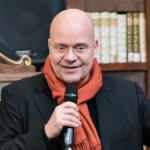GOING DIGITAL? IMAGES, DATA, AND DISCIPLINARY IMAGINARIES
From Wednesday 23 to Thursday 24 March
A recent appraisal of “digital” art history makes two critical observations: first, “images do not have a ‘natural’ equivalent in digital form” (Drucker 2015); second, “digitization is not representation but interpretation” (ibid.). This workshop starts from these two observations to discuss the multifaceted relationships between the ontological status of images and empirical data, on the one hand, and the epistemological orientation of disciplines, on the other. The workshop brings together selected art historians, archeologists, and historians of science to reflect upon this question on the basis of particular case studies in the context of digital humanities more broadly.
EVENING LECTURE
Digital or Digitalism – another chapter in the history of the humanities?
Michael Hagner (ETH, Zürich)
Wednesday 23 March – 6.15pm
MEDIA
AGENDA
Wednesday, 23 March
14.30 Welcome and introduction
Michele Luminati and Philippe Sormani
(Istituto Svizzero di Roma)
15.00 Digitalizing images, revisiting art history
Thomas Hänsli (Art history, ETHZ / UNIZH, Zurich)
15.45 Digitalizing and exhibiting art: some practical and art historical insights
Ariane Varela Braga (Art history, UNIZH, Zurich)
16.45 Imagining a Nation’s Capital: The John Henry Parker Photography Collection (1864-79) in the Digital Age
Lindsay Harris (History of Photography, American Academy in Rome)
18.15 Evening lecture:
Digital or digitalism – another chapter in the history of the humanities?
Michael Hagner (History of Science, ETHZ, Zurich)
Thursday, 24 March
10.00 From image interpretation to archeological finding: techniques of aerial archeology and geophysical prospection
Alessia Mistretta (Archeology, University of Geneva)
10.45 What is data? Notions of Data in Research Activities
Christoph Hoffmann (History of Science, University of Lucerne)
11.45 Photography and cinema as a form of proof between esthetical and judicial truths
Pasquale Beneduce (History of Law, University of Cassino)
13.30 Transfer to Swedish Institute in Rome (via Omero, 14)
15.00 Roundtable: digital humanities, quo vadis? All speakers
16.00 Digital Deserts – film projection: NEW VOID (A. Di Pietro, A. Shametaj – 2014, 30′) and final conversation
Toni Hildebrandt (Art history, University of Berne), Alessandro di Pietro (visual artist) and Ana Shametaj (theatre director)
PARTICIPANTS
Pasquale Beneduce
Henrik Boman
Guelfo Carbone
Lars Berggren
Alessandro di Pietro
Marc Duret
Alessandra Giovenco
Michael Hagner
Thomas Hänsli
Lindsay Harris
Toni Hildebrandt
Christoph Hoffmann
Maria Kraft
Federica Martini
Alessia Mistretta
Ana Shametaj
Philippe Sormani
Letizia Tedeschi
Ariane Varela Braga
SELECTED BIBLIOGRAPHY
- M. Hagner, Homo cerebralis. Der Wandel vom Seelenorgan zum Gehirn (Berlin, 1997)
- M. Hagner, Der Geist bei der Arbeit. Historische Untersuchungen zur Hirnforschung (Wallstein, 2006)
- M. Hagner, Der Hauslehrer. Die Geschichte eines Kriminalfalls. Erziehung, Sexualität und Medien um 1900 (Suhrkamp, 2010).


